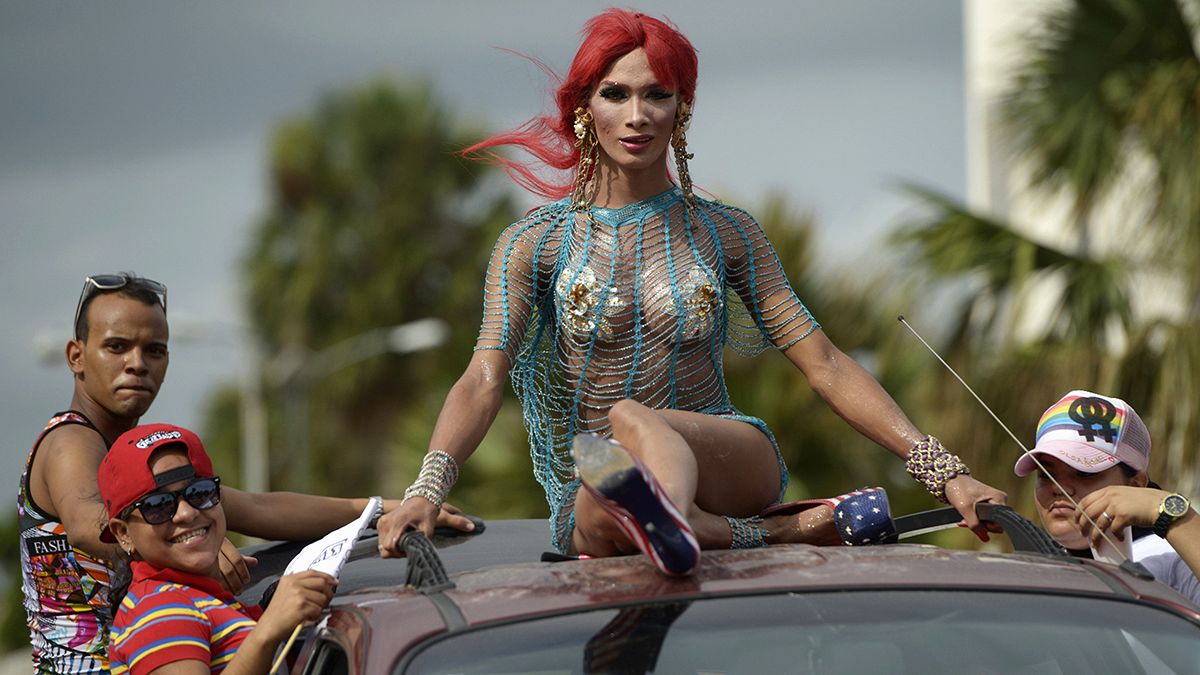A brief history of Transsexuality Nature has been playing cruel jokes on human sexuality since the dawn of time, and society’s reaction to
Nature has been playing cruel jokes on human sexuality since the dawn of time, and society’s reaction to individuals caught in this dilemma has varied from community to community, and over time.
As it is now, so it was then. The very rich or powerful have far fewer problems. Take for example Egypt’s Queen Hatshepsut, who it is suggested was at least an occasional cross-dresser. In many societies in the Ancient World, transsexuals had ceremonial duties, or were seen as having a special relationship with the gods. They were not especially reviled, nor persecuted. There wasn’t even a word used to indicate the difference of these individuals until the 19th century.
Prolific Roman poet Ovid’s “Metamorphosis”, one of his most famous works, tells the story of a man transformed into a woman, and just a few years later Emperor Nero reputedly transformed a male slave into a woman, and then married her.
Moving on a little, and in the sixth century AD Saint Gregory of Tours wrote a story about a man who had worn women’s clothing as a child and had continued into adulthood by dressing as a nun and living in a convent. However the ground had long before begun to shift as Christianity gained influence in Rome.
Constantine I’s fusion of church and state sounded the death knell for non-conformity, as the ruling class sought to legitimise slavery and stamp out old beliefs. This period marks the first witchunts, and the first systematic expressions of hatred towards trans people.
The advent of class divisions, the acquisition of wealth and power, and the ownership of property fed a movement toward patriarchal governing that felt threatened by the existence of female and transgender spiritual leaders. Both had to be eliminated.
Islam, which at its debut found ways to accomodate trans expression, now joined with Medieval Europe as its own elites sought to cement their positions. Even when some figures rose to prominence and proved useful for states and rulers, most notably Joan of Arc , once they had outlived their usefulness, they too were sidelined, or worse.
By the time of the Renaissance things had settled down into a status quo recognisable today. “Cross dressing” continued in popular festivals and folklore, where old ways and pre-Christian beliefs were still, albeit reluctantly, tolerated, even as the Church and state often sought to ban them. In Shakespearian theatre the idea of females performing was never even considered, and women’s roles were played by men. It was a man’s world.
Transsexuals were now underground, and in private, at least for the masses. Wealthy trans expression continued unabated. Few men sought to live their lives as women; however several women lived lives as men, often on the margins of society in the criminal underworld, or finding at least temporary refuge in one of the branches of medicine. Discovery would often still mean disgrace, however.
In the 18th century minor noble Charles de Beaumont, the Chevalier d’Eon, as legend has it, caught the eye of Louis XV at a ball he attended dressed as a woman. The two men became lovers, and d’Eon forged a career as a spy and diplomat for his king. He lived the final 32 years of his life exclusively as a woman, from 1793 in Britain sharing a house with a widow, Mary Cole. On his death aged 81 in 1810, doctors were astonished to discover he was a man.
Once again, wealth and privilege offered security for transsexuals. Those less fortunate could find some security in the entertainment world where their deviation from the norm was appreciated. Even Charlotte Charke, for some the first overtly transsexual lesbian in history, who acted as “Charles Brown” in the mid-18th century in Britain, came from a wealthy theatrical family. It did not prevent her father from disowning her. She is credited with writing the first female autobiography.
One of the most famous figures of them all was 19th century French novelist Amantine Lucille Aurore Dupin, better known as George Sand. Despite marriage and children and a string of male lovers who included some of the most famous artists of the day, she also enjoyed a lesbian affair and scandalised society with her male attire and smoking in public.
But were these examples of transsexuality or transvestism? Like so much of unconventional sexuality, much is buried, whispered, rumoured or sniggered about without ever attaining the certainty of fact. What is certain, however, is that the rise of the music hall, first in Britain and then in other dense urban areas from the mid 19th century on, offered opportunities for a new generation of mostly female impersonators to make careers in show business. It is a comic tradition that persists to this day. The dense heavily-populated urban areas also offered a vibrant market for those who chose prostitution as a way of being able to live their lives more or less openly.
Then in 1869 the first medical paper on transsexuality is published by Karl Friedrich Otto Westphal. In 1910 Magnus Hirshfeld coins the phrase “transvestite”, and nine years later he opens the world’s first clinic, the Institute of Sexology to serve transssexual people. Their lives and dilemmas are no longer being spoken of in hushed terms or brushed under a carpet. However there is still much association of homosexuality or transvestism with transsexuals, a confusion that continues today. In 1923 Hurschfeld recognises the difference, and the word “Transsexual” is born. Carl Yung’s theories of “animus” and “anima” existing in male/female psyches are also expounded at this time. In 1930 Einar Wegener, a Danish painter, is believed to be the first recipient of sex-change surgery. He becomes Lily Elbe, sparking a major public scandal in Denmark and Germany. Although this period represents an awakening, being transsexual remains taboo and sometimes dangerous. This flowering of original thinking in Germany is ended by the Nazis, who burn Hirshfeld’s Institute to the ground.
After WWII the focus switches to the USA, where a few surgeons take up the challenge of sex change operations anew, on both men and women. Christine Jorgensen is “outed” by the press with the headline “Ex-GI Becomes Blonde Bombshell”. The year after B-movie film director Ed Wood makes “Glen and Glenda”, purportedly based on her experience.
In 1955 psychologist Dr. John Money writes the first of many papers for Johns Hopkins university, which becomes a pioneering centre of sexual research. In the same year Australian comedian Barry Humphries gives “Mrs Norm Everage” her first stage outing, before she becomes a Dame. In Britain Danny La Rue, Stanley Baxter, Benny Hill and a host of others create female characters for comedy routines, taking them from the music hall and into people’s homes via TV. These drag artists help chip away at social taboos, but fundamentally for full transsexuals life remains very difficult.
Fast forward now to the late 1960s and early 1970, a time of liberation, experimentation, rebellion and repression. As morals changed and some transsexuals came “out” and started to become militants for the cause, they faced a mixture of acceptance, bewilderment and violent backlash. The IOC starts gender testing for athletes, and stage show and movie “The Rocky Horror Show” coined a phrase, “ Don’t dream it, be it” that was picked up around the world.
One figure, however, really brought transsexuals, even the mere idea that someone would want to physically change their sex, into the mainstream. Tennis star Reneé Richards is banned from a women’s tournament in America in 1976 after being “outed” as a man. Her subsequent legal battle establishes that transsexuals are fully, legally recognized in their new identity after transition and surgery.
What was clear was that now transsexuals were defining themselves, and no longer remaining silent when others did it for them. But when Boy George and Culture Club sang “Do you really want to hurt me” in 1982, it was equally clear many people still did. As transsexuals’ profiles rise, so do the passions of their opponents.
So now to today and the extraordinary story of Caitlin Jenner. In the same year Reneé Richards was fighting to compete as a woman, Bruce Jenner was winning the Olympic Decathlon Gold Medal and becoming the All-American hero, the epitome of virile sporting manhood, an icon and role model. Except as Caitlin tells us now, she was living a lie and was deeply unhappy inside. The fact she waited so long before having the transformative surgery is hard to figure, and the fact that, aged 65, she came out as a highly sexualised “hot grandma” has stunned many. But then Caitlin is a multi-millionaire celebrity, and can do as she likes. Plus ça change…


